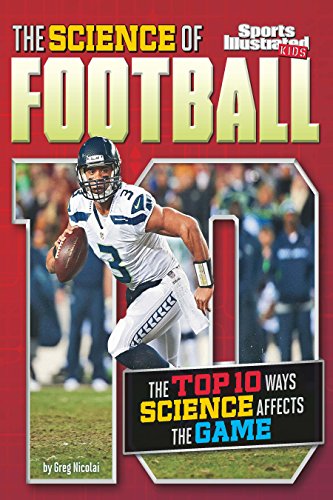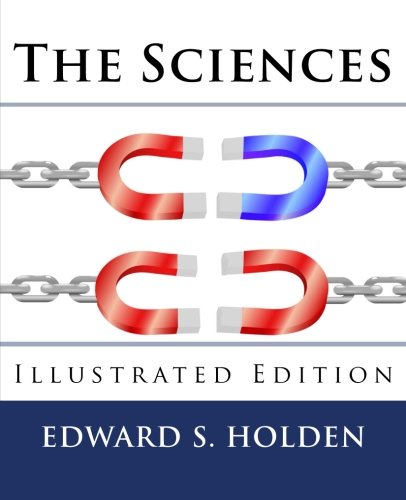-
The Science of Mom
Alice Green Callahan
eBook (Johns Hopkins University Press, Aug. 23, 2015)It seems like every time a new mother turns on her computer, radio, or television, she is greeted with news of yet another scientific study about infancy. Ignoring good information isn’t the right course, but just how does one tell the difference between solid studies, preliminary results, and snake oil? In this friendly guide through the science of infancy, Science of Mom blogger and PhD scientist Alice Callahan explains how non-scientist mothers can learn the difference between hype and evidence. Readers of Alice’s blog have come to trust her balanced approach, which explains the science that lies behind headlines. The Science of Mom is a fascinating, eye-opening, and extremely informative exploration of the topics that generate discussion and debate in the media and among parents. From breastfeeding to vaccines to sleep, Alice’s advice will help you make smart choices so that you can relax and enjoy your baby.
-
The Sciences
Edward S. Holden
Paperback (Yesterday's Classics, May 27, 2009)An introduction to the sciences that wakens the imagination, conveys useful knowledge, and opens the doors towards wisdom. Its special aim is to stimulate observation and to excite a living and lasting interest in the world that lies about us. The sciences of astronomy, physics, chemistry, meteorology, and physiography are treated as fully and as deeply as the conditions permit; and the lessons that they teach are enforced by examples taken from familiar and important things. Dozens of illustrations depict the features described in the text. Suitable for ages 11 and up.
-
The Sciences
Edward S. Holden
language (Yesterday's Classics, Dec. 4, 2010)An introduction to the sciences that wakens the imagination, conveys useful knowledge, and opens the doors towards wisdom. Its special aim is to stimulate observation and to excite a living and lasting interest in the world that lies about us. The sciences of astronomy, physics, chemistry, meteorology, and physiography are treated as fully and as deeply as the conditions permit; and the lessons that they teach are enforced by examples taken from familiar and important things. Dozens of illustrations depict the features described in the text. Suitable for ages 11 and up.
-
The Science of Us
LT Ville
language (Lustyville Press, Feb. 3, 2012)It’s senior year. Pat is a popular high school student. He is the captain of the hockey team and everyone knows that he is gay. Kyle is not as popular but he is a member of the hockey team. He is in the closet to everyone except his best friend, Nick. Kyle has had a crush on Pat for years. Nick and Kyle create a plan for Kyle to seduce Pat. Teenage drama ensues and the plan leads all of the guys down an unexpected path as long kept secrets are exposed.
-
The Science of Freedom
Michael Abraham
Paperback (CreateSpace Independent Publishing Platform, Jan. 31, 2018)So how can we know if human beings really have free will?The question of whether or not we have free will (libertarianism) has accompanied us since the beginning of philosophy and history. In recent years, the issue has started to move from philosophy into the field of science, especially neuroscience. This book shows that scientific findings do not decisively demonstrate the correctness of any answer, and that the question is still a philosophical one. It begins by defining the relevant terms, primarily free will and determinism, showing that incautious definitions lead to quite a few errors in the discussion of these issues.For answers, check with philosophers and thinkers!Examining the issue of free will from various angles, in clear, accessible language for the educated reader, it offers a consistent and systematic basis for a libertarian approach that is in accordance with scientific findings, showing that it arises naturally from considerations of common sense and various philosophical aspects.Scroll up now to get your copy of The Science of Freedom!
-
The Science of Science Fiction
Matthew Brenden Wood, Tom Casteel
Paperback (Nomad Press, Feb. 14, 2017)Early science fiction imagined a world with space travel, video calls, and worldwide access to information, things we now know as NASA’s human spaceflight program, Skype, and the Internet. What next? Could we really bring back the dinosaurs, travel to a distant star, or live on Mars?In The Science of Science Fiction, readers ages 12 to 15 explore the science behind classic and modern science fiction stories, including artificial intelligence, androids, and the search for alien life. They learn how cutting edge concepts, including time dilation and genetic manipulation, influence today’s fiction.The Science of Science Fiction promotes critical thinking skills through inquiry, discovery, research, analysis, and reflection of key scientific ideas and concepts made popular by many titles in science fiction. Each chapter features informative sidebars and video and website links for an in-depth look at key topics. Science-minded experiments include a simple demonstration of artificial gravity using a bucket of water and calculating the speed of light using chocolate in a microwave. This variety of resources ensures the material is accessible to students with diverse learning styles. T
T
-
The Science of Football
Gregory Nicolai
language (Capstone Press, Jan. 1, 2016)Introduces young readers to the exciting ways science affects football! Simple text, full-color photos, and a running top-ten countdown help readers grasp the science within their favorite sports.
-
The Science of Science Fiction
Matthew Brenden Wood, Tom Casteel
eBook (Nomad Press, Feb. 20, 2017)Early science fiction imagined a world with space travel, video calls, and worldwide access to information, things we now know as NASA's human spaceflight program, Skype, and the Internet. What next? Could we really bring back the dinosaurs, travel to a distant star, or live on Mars?In The Science of Science Fiction, readers ages 12 to 15 explore the science behind classic and modern science fiction stories, including artificial intelligence, androids, and the search for alien life. They learn how cutting edge concepts, including time dilation and genetic manipulation, influence today's fiction.The Science of Science Fiction promotes critical thinking skills through inquiry, discovery, research, analysis, and reflection of key scientific ideas and concepts made popular by many titles in science fiction. Each chapter features informative sidebars and video and website links for an in-depth look at key topics. Science-minded experiments include a simple demonstration of artificial gravity using a bucket of water and calculating the speed of light using chocolate in a microwave. This variety of resources ensures the material is accessible to students with diverse learning styles.
-
The Story of Science
Anna Claybourne
Hardcover (Usborne Publishing Ltd, Aug. 1, 2015)Library Friendly Edition of original- A narrative introduction to the brilliant brains and eureka moments behind the greatest scientific discoveries in history. Includes scientific facts about black holes, moons, magnets, microscopic creatures, the truth about heat and light, what plants eat, DNA, diseases and dinosaurs, atoms, asteroids and X-rays and more
-
The Sciences
Edward S. Holden
Paperback (CreateSpace Independent Publishing Platform, April 25, 2014)"The Sciences," by Charles Holden, introduces young students to the sciences in an imaginative, wise, and knowledgeable way. The books goal is to encourage students to observe the develop a lasting interest in the world around them. The sciences of astronomy, physics, chemistry, meteorology, and physiography are covered in the book; and the lessons they teach are enforced by examples taken from familiar and important things. Includes many illustrations. Suitable for ages 11 and up.
-
The Science of a Bicycle: The Science of Forces
Ian Graham, Debra Voege
Library Binding (Gareth Stevens Pub Learning library, Jan. 1, 2009)An innovative series with engaging sidebars, colorful photography, and labeled diagrams uses familiar, everyday objects to present science concepts such as sound, motion, states of matter, and other science curriculum topics. W
W
-
The Science of Science Fiction
Matthew Brenden Wood, Tom Casteel
Hardcover (Nomad Press, Feb. 14, 2017)Early science fiction imagined a world with space travel, video calls, and worldwide access to information, things we now know as NASA’s human spaceflight program, Skype, and the Internet. What next? Could we really bring back the dinosaurs, travel to a distant star, or live on Mars?In The Science of Science Fiction, readers ages 12 to 15 explore the science behind classic and modern science fiction stories, including artificial intelligence, androids, and the search for alien life. They learn how cutting edge concepts, including time dilation and genetic manipulation, influence today’s fiction.The Science of Science Fiction promotes critical thinking skills through inquiry, discovery, research, analysis, and reflection of key scientific ideas and concepts made popular by many titles in science fiction. Each chapter features informative sidebars and video and website links for an in-depth look at key topics. Science-minded experiments include a simple demonstration of artificial gravity using a bucket of water and calculating the speed of light using chocolate in a microwave. This variety of resources ensures the material is accessible to students with diverse learning styles. T
T